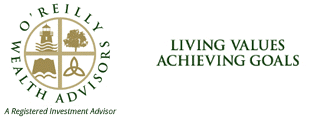You’re about to read advice that, likely, is different than you might expect. Here’s a hint: I did not call it the “401k Investment Committee.” Rename it and repurpose it as the “401k Oversight Committee.”
A quick reminder - any person or group in charge of a 401k is responsible for the mechanism that hard working employees are counting on for security and safety in their old age! A bad plan will result in 30-50%+ less money in retirement over a career.
It’s very smart to have more than one person overseeing your 401k. You don’t want it all on one person. Ideally at least one company owner or highly ranked executive should be on that committee.
401k’s are complex. Understanding fees, the various providers involved, and how they interact requires extensive learning and experience. Many company employees in that oversight role would admit they don’t fully understand.
Investing especially as applied to 401k plan investment lineups is complex. It’s not the same as investing a personal portfolio.
Most people think of the purpose of a 401k committee as choosing the fund lineup. I’ll come back to this in a moment.
Having a company committee choose the fund lineup is a very bad idea. You need a particular expertise, which the company committee doesn’t have. It’s a very specialized skill. It’s complex because your fund lineup needs to accommodate those that are do-it-yourselfers who want to build their own portfolio. You also need the fund lineup to take care of the most frequent situation, those who want “do it for me”. You want to make sure that your fund lineup reflects the latest state of the art which is impacted by a constant barrage of lawsuits.
What should the committee do (if they’re not choosing investments)? Once the investments are on target because a good ERISA Section 3(38) has taken that on, the committee can move on to much more important tasks.
Oversee the providers in the plan – their duties, their costs, their service contracts and their performance in terms of doing their jobs. One of the providers can serve as an aid to manage the remaining suppliers.
Use providers that are willing to hold fiduciary duty so executive and owners can delegate sme of their liability and tasks to them. There’s no way to delegate your fiduciary liability to zero, but a significant reduction can be accomplished. Often the cost of a plan with fiduciaries is less than one without. (Contact us if you want more detail about the tasks that can be delegated to a fiduciary.)
Manage your plan’s effectiveness and design - maximize its effectiveness as a tool to attract and retain employees. Review design and take advantage of support offered from a plan advisor. Be creative in how your plan advisor assists employees. Look at implementing aspects of a financial wellness approach. Set goals for employee participation. Seek input from employees.Consider incentives beyond matching to enhance results.
Oversee regular fiduciary governance meetings, at least annually if not more often. The committee gathers, usually including the provider that’s assisting with provider management and brings documentation to the meeting.
What is the flawed investment concept still hurting 401k plans today?
Generally speaking there are two major investing philosophies. 1) Predict what is going to happen (with stocks, markets, economy) and buy/sell securities based on the prediction. 2) Own most securities so you own the big winners. Use lowest cost funds.
When you look at those “actively managed” funds that are attempting to catch a predicted wave, their annual ranking compared to their peers often varies from lowly ranked to highly ranked. Often these actively managed funds go through regular cycles, from high rank to low rank and back again; this behavior has been documented.
This puts the “investment choosing committee” in a very tough position. When a fund is identified as poor performing, it gets replaced with one that is performing well. Yet, it could be that both funds are about to move from high to low, or low to high. So the investment committee is making the wrong decision at the wrong time; dropping a fund that is about to be higher ranked and adding a fund that is about to be lower ranked.
If a plan’s committee or their investment manager is undertaking the much more aggressive “active management approach”, then their task to document what they’re doing is much larger!
If an individual wants to take on excess risk using an active management strategy - that’s their decision. Go for it! Maybe you’ll be lucky. But if you are a fiduciary overseeing a plan, imposing that risky strategy is not a good idea.
Active fund managers struggle. What a stressful job! Predicting anything is very challenging, including the future movement of specific stocks, the market and economy. Fortunately for them, many people in the prediction industry are not held accountable, and they are often very good, through practice, at explaining what went wrong and making it seem that it wasn’t their error.
I always chuckle when the invitations come out for January or February talks by an economist on “the state of the economy and 2024 expectations.” I often attend but from the point of view of curiosity, not because I would make decisions based on those predictions.
There are long term market behaviors, statistically documented, that can be used to enhance returns. You can slightly “tilt” your portfolio toward these as a smart long term “active management strategy”. Like anything else, though, these behaviors, though prevalent over the long tem, can go out of favor for years before they come roaring back. So as in all investing, discipline is key.
What are your thoughts? Reach out to us!
